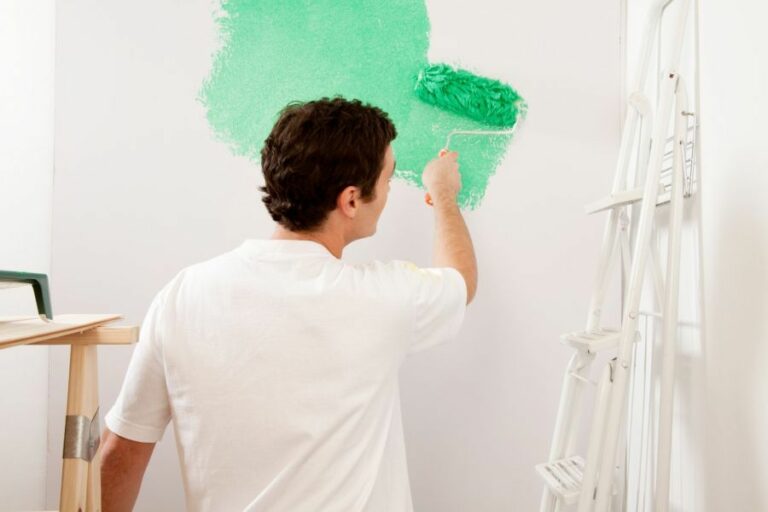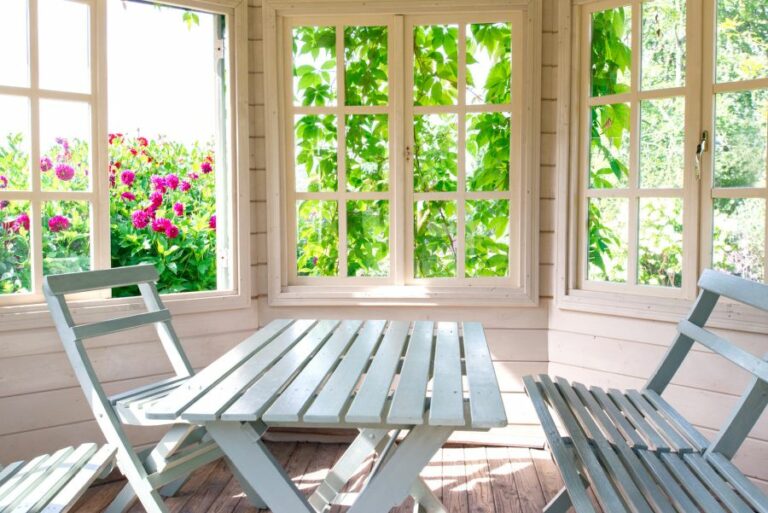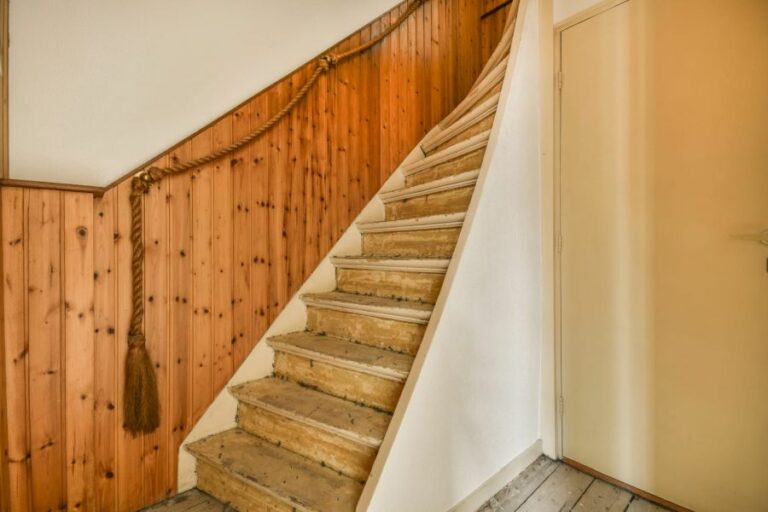Top-Rated Indoor Painting Primer, 25 Things You Should Know
Choosing a top-rated indoor paint primer can significantly affect the longevity and overall appearance of your paint job. With so many available options, it can be challenging to determine the best one for your project. Don’t worry. We’ve got you covered! In this discussion, we’ll explore the leading indoor painting primers that professional painters and DIY enthusiasts swear by.
Top-rated indoor painting primer:
The top-rated indoor painting primers include KILZ Original Primer, Zinsser Bulls Eye 1-2-3 Primer, Benjamin Moore Fresh Start Primer, and Valspar PVA Primer. These primers offer effective adhesion and stain-blocking capabilities and are suitable for various surfaces such as wood, drywall, and metal.

Ready to give your interior walls a fresh makeover? Discover the top-rated indoor painting primers that will help you achieve a flawless, long-lasting finish. Read on for expert tips, product reviews, and more to turn your home into a stunning masterpiece!
Contents
- 1 Best Indoor Painting Primer: Top-Rated Selections
- 2 Best Indoor Primer: Essential Guide on Choosing
- 3 Top Primer Choices for Walls and Ceilings
- 4 Professional-Grade Primers: Which One to Choose?
- 5 Primer Use in Professional Painting: Do They Use It?
Best Indoor Painting Primer: Top-Rated Selections
Painting is not just about applying colors on the walls. A successful paint job begins with the right preparation. One essential step in this preparation process is the application of a high-quality primer.
• Importance of Indoor Priming
Applying primer provides a proper surface for the paint to adhere to, ensuring that your paint job will last longer and look better. Primer also has a number of other benefits, including:
- Sealing porous surfaces: Primer seals the pores in the surface, preventing the paint from being absorbed too quickly and ultimately reducing the number of coats needed.
- Hiding imperfections: Primer provides an even base, helping to hide any small cracks, dents, and other surface imperfections.
- Improving adhesion: Primer helps the paint adhere better to the surface, preventing peeling, flaking, and other common paint problems.
- Blocking stains and odors: Some primers contain ingredients that effectively block stains and odors, giving your room a fresher, cleaner appearance.
• The Top Rated Indoor Painting Primers
Below, we discuss some of the top-rated primers available in the market:
1. KILZ Original Primer
KILZ Original is a versatile, oil-based primer that has been a reliable choice for professional painters and DIY enthusiasts alike for years. It excels at blocking stains and odors and is suitable for a variety of surfaces, including wood, drywall, and plaster.
You can learn more about KILZ and its products on its official website.
2. Zinsser Bulls Eye 1-2-3 Primer
Zinsser Bulls Eye 1-2-3 is a water-based primer that provides excellent adhesion and stain-blocking capabilities. It is formulated to adhere to difficult surfaces, making it ideal for glossy surfaces, paneling, and even metal.
This quick-drying primer does not require sanding before application, saving you time and effort. Discover more details about Zinsser primers on their official site.
3. Benjamin Moore Fresh Start Primer
Benjamin Moores Fresh Start primers come in both oil-based and water-based formulations, depending on your preference and the surface to be primed.
They offer exceptional adhesion and stain-blocking properties, making them a popular choice among professionals. Further information is available on the Benjamin Moore website.
4. Valspar PVA Primer
If you are specifically priming new drywall, Valspar PVA Primer is an excellent choice. PVA (polyvinyl acetate) primers are designed to seal the pores of the drywall, ensuring a proper surface for the paint to adhere to.
This makes it an economical choice for professional painters and DIYers alike. More information can be found on Valspar’s website.
• Tips for Choosing the Right Primer
When selecting an indoor painting primer, consider the following factors:
- Surface type: Choose a primer that is specifically formulated for the surface you will be painting, such as wood, metal, or drywall.
- Level of stains and odors: If you are dealing with heavy stains or persistent odors, select a primer that has stain-blocking and odor-sealing properties.
- Water-based vs. oil-based: Consider the pros and cons of each type of primer. Water-based primers are low-odor and easy to clean up, while oil-based primers provide excellent adhesion and stain-blocking capabilities.
- Ease of application: Look for primers that do not require time-consuming preparation, such as sanding or multiple coats.
- Budget: Choose a primer within your budget without compromising on quality. Sometimes, investing in a higher-quality primer can save you the cost of additional paint layers or repairs down the line.
- Recommendations: Check for product reviews and recommendations, as well as advice from experienced painters, to ensure you select a reliable and effective primer.
• Final Thoughts
The key to a long-lasting and visually appealing paint job is using a top-quality primer. By investing in one of the top-rated indoor painting primers mentioned above and considering your specific requirements, you can ensure that your paint project will look professional and stand the test of time.
For more in-depth information on primers, the Paint Quality Institute offers various resources to help with your painting projects.
Rank | Product Name | Brand | Average Rating |
|---|---|---|---|
1 | KILZ 2 Multi-Surface Stain Blocking Interior/Exterior Latex Primer | KILZ | 4.5/5 |
2 | Rust-Oleum Zinsser Bulls Eye 1-2-3 Primer | Rust-Oleum | 4.4/5 |
3 | INSL-X Stix Waterborne Bonding Primer | INSL-X | 4.6/5 |
4 | KILZ Premium High-Hide Stain Blocking Interior/Exterior Latex Primer | KILZ | 4.7/5 |
5 | Zinsser B-I-N Shellac-Base Primer | Zinsser | 4.3/5 |
Best Indoor Primer: Essential Guide on Choosing
Selecting the best primer for your indoor painting project is crucial for a successful and long-lasting result. Based on factors such as the surface to be painted, the type of paint, and personal preferences, we will discuss the top choices for indoor primers.
• Water-Based Primers: Suitable for Drywall and Wood Surfaces
Water-based primers are the most common choice for indoor painting projects. They have low odor and are easy to clean up with water, making them an eco-friendly option. These primers provide excellent adhesion and are suitable for use on drywall, plaster, and wood surfaces.
– Top Recommendations:
- Kilz Premium High-Hide Stain Blocking Primer: This water-based primer offers superior adhesion on various indoor surfaces, and effectively blocks stains while providing a mildew-resistant finish. A great choice for high-humidity areas, like bathrooms and kitchens.
- Zinsser Bulls Eye 1-2-3 Primer: An all-purpose, water-based primer that resists peeling, blistering, and mildew growth. It quickly dries to a smooth finish and is suitable for both residential and commercial applications.
• Oil-Based Primers: Best for Stain and Odor Blocking
Oil-based primers have been the go-to choice for professional painters for their durability and excellent adhesion properties. They are ideal for surfaces with heavy stains, water damage, or those that require severe odor-blocking capabilities. However, the high levels of volatile organic compounds (VOCs) and strong odor make them less environmentally friendly.
– Top Recommendations:
- Kilz Original Multi-Surface Stain Blocking Primer: This oil-based primer is ideal for heavy-duty stain and odor-blocking jobs like covering smoke-saturated surfaces or water stains. It dries quickly and can be used on a variety of surfaces, including wood, plaster, and metal.
- Zinsser Cover Stain Oil-Based Primer: A versatile and high-performing oil-based primer that hides stubborn stains and provides an odor-blocking seal. It’s a great choice for covering water stains, graffiti, or nicotine residue.
• Shellac-Based Primers: Professional-Level Stain and Odor Blocking
Shellac-based primers are known for their stain and odor-blocking capabilities. They are a top choice for professional painters when dealing with extreme cases like fire damage, severe water stains, and heavy nicotine exposure. Shellac-based primers dry quickly, adhering well to a variety of surfaces.
– Top Recommendation:
- Zinsser B-I-N Shellac-Based Primer: This primer offers ultimate stain and odor blocking, making it ideal for extreme cases. It dries quickly, adhering well to wood, plaster, metal, and tile surfaces. B-I-N is also mold and mildew resistant, making it suitable for high-humidity areas.
• Choosing the Right Primer for Your Project
Before selecting a primer, consider the following factors:
- Surface Type: Water-based primers work best on drywall and wood, while oil-based or shellac-based primers are ideal for heavy stain and odor-blocking situations. Refer to the manufacturer’s recommendations for specific surface applications.
- Paint Compatibility: Make sure your primer is compatible with the paint you plan to use. Most water-based primers are suitable for both latex and oil-based paints, while oil-based primers generally work best with oil-based paints.
- Odor and VOCs: If you are concerned about the environmental impact, choose a low-VOC, water-based primer. Keep in mind that oil-based and shellac-based primers usually contain higher levels of VOCs and have stronger odors.
- Drying Time: Shellac-based primers tend to dry the fastest, followed by oil-based and then water-based primers. Be sure to follow the recommended drying times before applying the topcoat.
• Final Thoughts
In conclusion, selecting the best primer for your indoor painting project largely depends on the surface to be painted and the desired results.
Water-based primers are the most common choice for residential applications due to their eco-friendly nature, but for professional-level stain and odor-blocking capabilities, oil-based or shellac-based primers are the ideal solution.
By considering the factors mentioned above and our top recommendations for each primer category, you can be confident in making an informed decision on the best primer for your specific indoor painting project.
Top Primer Choices for Walls and Ceilings
When it comes to painting your home, proper preparation is key to achieving a flawless and long-lasting result. One of the most important steps in the preparation process is selecting the right primer for your ceilings and walls.
• Understanding the Purpose of Primer
The primary purpose of a primer is to create a perfect base for paint to adhere to, ensuring that it will stick to the surface of the wall or ceiling and last longer. Primers can also help to correct surface imperfections, smooth uneven textures, and even prevent the growth of mold and mildew.
Additionally, using a quality primer can help in achieving an even color, particularly when dealing with difficult or porous surfaces. For further details on the benefits of a primer, a useful reference is available from the U.S. Department of Agriculture.
• Types of Primers for Ceilings and Walls
There are several types of primers available, each with its unique properties and application benefits. Let’s take a closer look at some of the most common types:
– Oil-based Primers
Oil-based primers are known for their excellent adhesion and stain-blocking properties. They are particularly suitable for wood surfaces, as they are able to seal wood knots, and tannins and prevent paint from absorbing into the wood.
They also work well on surfaces that have been previously painted with oil-based paints. However, they are not recommended for use on drywall or over latex paints.
– Latex-based Primers
Latex-based primers, also known as water-based or acrylic primers, provide a fast-drying and easy-to-clean option. They work well on a variety of surfaces, including drywall, plaster, and most previously painted surfaces.
Latex primers are also known for their excellent adhesion and flexibility, making them a popular choice for both walls and ceilings.
– Shellac-based Primers
Shellac-based primers are known for their powerful stain-blocking properties, often outperforming oil-based and latex-based primers for challenging stains such as smoke or water damage. They have a powerful odor and require the use of denatured alcohol for cleanup.
However, their excellent sealing properties make them ideal for use on both interior and exterior surfaces.
• Factors to Consider When Selecting a Primer
With several types of primers available, it’s important to consider the following factors when selecting the right primer for your project:
– Surface Material & Condition
The type of material and its current condition will play a significant role in determining the best primer to use. For instance, if you’re working with drywall, opt for a latex-based primer. If painting over wood surfaces or surfaces with tough stains, consider oil-based or shellac-based primers.
– Interior vs. Exterior
When choosing a primer, it’s essential to consider whether the walls or ceilings are located indoors or outdoors. Though some primers are suitable for both interior and exterior use, be sure to read the label to confirm their compatibility with your specific project.
– Stain-Blocking Needs
If you need to cover stubborn stains, such as smoke or water damage, or hide strong odors, a shellac-based primer is likely your best option. In some cases, two coats of primer may be necessary to ensure optimal coverage.
– Paint Compatibility
It’s essential to ensure that the primer is compatible with the paint you plan to use. For example, latex-based primers work best with latex paints, while oil-based primers are more suitable for oil-based paints.
• My Recommendations
Based on my experience, I recommend the following primers for ceilings and walls:
- For most interior drywall projects, a high-quality latex-based primer will provide excellent adhesion and coverage, such as the KILZ Premium High-Hide Stain-Blocking Latex Primer.
- When dealing with stubborn stains and odors or painting over surfaces with significant wear and tear or water damage, a powerful shellac-based primer like Zinsser B-I-N Shellac-Based Primer is a reliable choice.
- For wood surfaces, oil-based primers offer the best sealing and adhesion properties. I recommend KILZ Original Multi-Surface Stain-Blocking Oil-Based Primer for such applications.
In conclusion, when selecting the best primer for your ceiling and walls, carefully consider factors such as surface material, indoor or outdoor use, stain-blocking needs, and paint compatibility. By doing so, you can ensure a successful paint job that will look great and last for many years to come.
Name | Type | Surface | Features |
|---|---|---|---|
KILZ 2 Multi-Surface Stain Blocking Primer | Latex | Ceilings and walls | Stain-blocking, mold-resistant, easy to clean |
Zinsser Bulls Eye 1-2-3 Primer | Water-based | Ceilings and walls | Adhesion to various surfaces, moisture resistance, quick-drying |
Rust-Oleum Zinsser 2301 Problem Surface Sealer | Acrylic | Ceilings and walls | Adhesion to chalky surfaces, seals porous surfaces, fast-drying |
Behr Pro i300 Interior Dryfall Flat Paint | Acrylic | Ceilings | Excellent hide, easy to apply, quick-drying |
Professional-Grade Primers: Which One to Choose?
As a professional with years of experience in the painting industry, I understand the importance of selecting the ideal primer for a given project. The primer plays a crucial role in providing a proper foundation for the paint, ensuring long-lasting, exceptional results.
• Types of Primers Used By Professionals
– Oil-Based Primers
Oil-based primers are ideal for interior and exterior surfaces, as they provide exceptional adhesion and stain-blocking properties. These primers work well on wood, metal, and masonry surfaces, making them a popular choice for professionals in various applications.
One highly recommended oil-based primer is the Zinsser Cover Stain Oil-Based Primer. This primer is known for its excellent stain-blocking capabilities, as well as its ability to adhere to surfaces without sanding. Also, it is compatible with latex or oil-based topcoats.
– Latex-Based Primers
Latex-based primers are water-based, making them easy to clean up and low in volatile organic compounds (VOCs). These primers are suitable for interior surfaces, particularly drywall, concrete, and plaster.
Latex primers dry faster than oil-based primers, reducing the wait time before applying the topcoat.
The KILZ Premium High-Hide Stain Blocking Primer/Sealer is a popular latex-based primer among professionals. It provides excellent adhesion, hides previous colors well, and is mildew-resistant.
– Shellac-Based Primers
Shellac-based primers are an excellent choice for blocking stubborn stains such as water damage, smoke, odors, and ink. They create a highly durable and cohesive surface for paint application, making them suitable for both interior and exterior projects.
Zinsser B-I-N Shellac-Based Primer is a highly recommended product in this category. Known for its ability to seal off tough stains and odors, this primer dries quickly and adheres well to a variety of surfaces.
• Factors to Consider When Choosing a Primer
– Surface Material
The type of surface you are working on will influence your primer choice. For example, oil-based primers are best for wooden surfaces, while latex-based primers are more suitable for drywall.
– Stain Blocking
If your project involves covering stains, consider using a primer with high stain-blocking capabilities. Shellac-based primers excel at blocking tough stains and odors, and oil-based primers are effective at covering general stains.
– Drying Time
Drying time is a crucial factor in project scheduling. If you need a quick turnaround, opt for latex-based primers that dry faster compared to oil-based primers.
– VOC Content
For eco-friendly projects or to reduce potential harm to individuals with sensitivities, choose a primer with low VOC content. Latex-based primers are typically low in VOCs, making them a safer choice.
– Interior or Exterior Application
The primer you choose should be suitable for the intended application. Oil-based primers work well for both interior and exterior projects, while latex-based primers are recommended for interior use due to their sensitivity to moisture.
• Professional Tips for Primer Application
- Thoroughly clean and prep the surface before applying primer. Sanding or deglossing may be necessary to ensure proper adhesion.
- Generally, one coat of primer is sufficient, but applying two coats may improve coverage and performance in some cases.
- Use the appropriate nap roller cover or brush for the type of primer and surface material. This ensures even coverage and smooth application.
- Tinting the primer to match or approximate the topcoat color can improve the final appearance and provide better coverage.
In conclusion, the primer you choose has a significant impact on the final result of your painting project. Selecting the right primer based on factors such as surface material, stain-blocking, and application requirements will help ensure a high-quality, professional finish.
Remember, experience is the best teacher; as you tackle different projects, you will develop a better understanding of which primers deliver the best results for your specific needs. In the end, a well-chosen primer provides a solid foundation for a successful and long-lasting paint job.
Primer Use in Professional Painting: Do They Use It?
Absolutely, professional painters understand the significance of primer, which is a preparatory coating applied to surfaces before painting. The use of primer provides multiple benefits, including enhanced paint adhesion, improved durability, and a visually pleasing, even finish.
• The Importance of Using Primer
The objective behind using a primer is to prepare the surface for paint. Primers possess unique formulations designed to address different concerns that may arise, such as irregular surfaces, water stains or bleeding, and improving paint adhesion.
– A Uniform Finish
Primers can cover patches, stains, and discolorations on surfaces, ensuring that paint colors appear more vibrant and uniform. This is particularly important when dealing with porous surfaces, like wood or drywall, that would typically absorb paint unevenly.
– Improved Adhesion
A well-prepared surface will greatly aid in the adhesion of paint. Primer forms a stable surface for the paint to adhere to, minimizing the risk of peeling and flaking in the long run.
– Enhanced Durability
The use of primer can significantly prolong the life of a paint job by sealing the surface, which prevents moisture from seeping in and causing damage. It can also stop rust from developing on metal surfaces.
• Selecting the Ideal Primer
When selecting a primer, it is essential to consider the specific requirements of the surface and paint that will be used. There are three main types of primers: latex, oil-based, and shellac-based.
– Latex Primer
Latex primer is a popular choice among professional painters because it is water-based, fast-drying, and adapts well to a wide range of surfaces. It works particularly well on porous materials like wood, drywall, and concrete.
Additionally, latex primer has low levels of volatile organic compounds (VOCs), making it environmentally friendly and reducing the risk of toxic fumes.
– Oil-Based Primer
Oil-based primer is an excellent choice for surfaces that may require heavy-duty protection due to exposure to changing temperatures or high moisture. Woodwork, metal, and masonry can greatly benefit from an oil-based primer.
Keep in mind that this type of primer may not adhere well to certain surfaces, like galvanized metal. Moreover, oil-based primers take longer to dry and contain higher levels of VOCs.
– Shellac-Based Primer
Shellac-based primer is best used when dealing with difficult stains, such as water damage, nicotine, and smoke residues. It dries quickly and seals the surface effectively. However, it may emit strong odors, so proper ventilation is necessary during application.
• Situations That Demand Primer
Understanding when to use primer is essential for achieving a professional and long-lasting finish. Below are some situations where using a primer is highly recommended.
– New or Uncoated Surfaces
New surfaces or those that have never been painted should always be primed to ensure better adhesion and coverage.
– Surface Repair or Damage
When repairing cracks and holes, or patching damage on a surface, applying primer is necessary in order to seal and even out the texture before painting.
– Color Changes or Covering Up
If you are significantly shifting the color of space, for example, from a dark tone to a light one, using a primer before painting can help in achieving the desired color accuracy.
– Areas Exposed to Moisture
Bathrooms, kitchens, and exterior surfaces are exposed to increased moisture, which can cause paint to peel or blister over time. Applying a primer will help maintain the durability of the paint job.
In conclusion, professional painters appreciate the indispensable role that primer plays in ensuring a flawless finish and a paint job that withstands the test of time.
Selecting the right primer type and applying it in the appropriate situations are fundamental steps in achieving a professional and long-lasting result.







